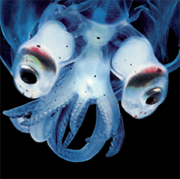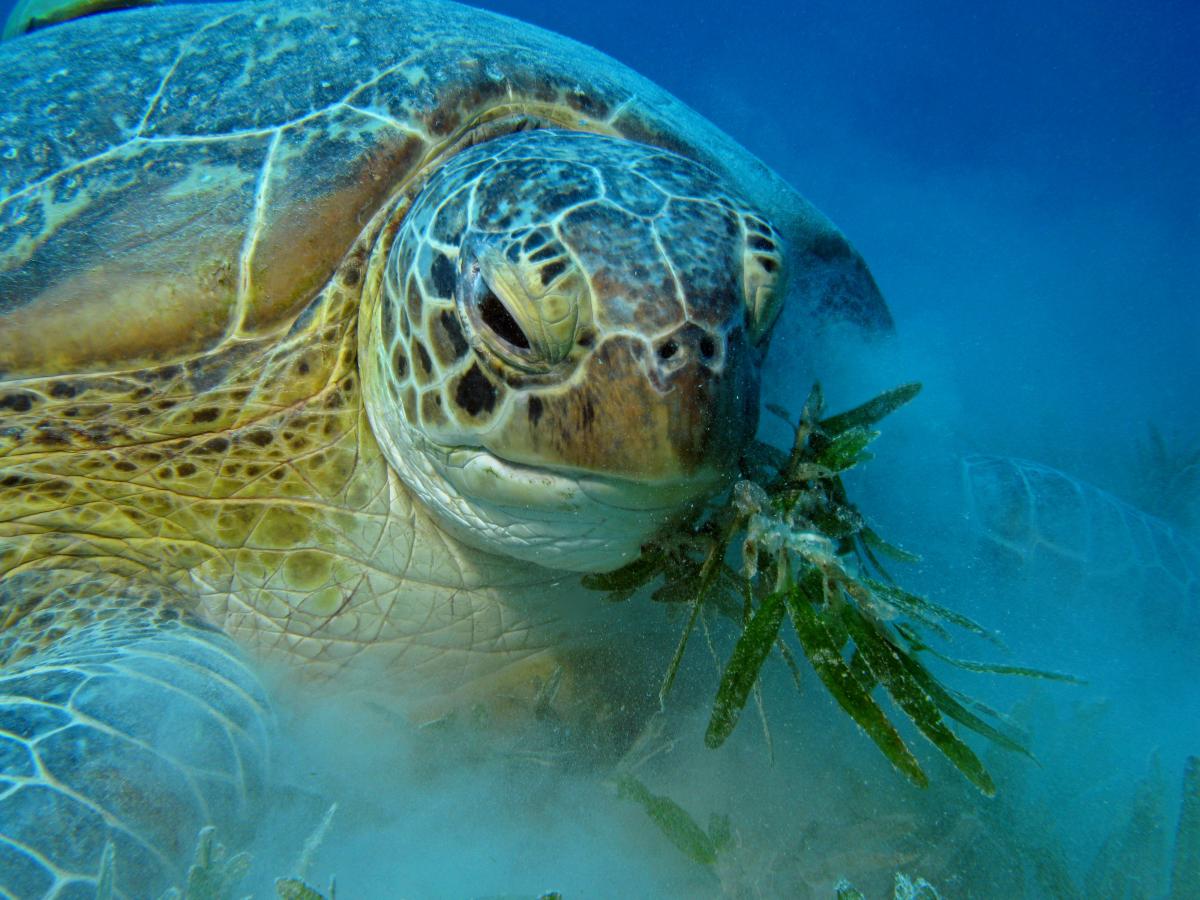Working Towards High Seas Biodiversity Conservation
The open oceans and deep seas represent 95 percent of the global biosphere in volume, play an important regulating role in the Earth’s climate and are home to a major part of the world’s biodiversity. However, mounting pressures from intensifying human uses, climate change and ocean acidification threaten to undermine these ecosystems’ biodiversity, balance and resilience. Due to their remoteness and the logistic difficulties linked to their exploration, these areas remain the least known and least protected places on the planet. Future conservation efforts on the high seas, the open oceans and deep seas falling outside of national jurisdiction, will thus depend on international cooperation and coordination

Photo: Peter Batson ExploreTheAbyss.com
With support from the German Federal Agency for Nature Conservation (BfN), the Global Marine Program is facilitating the Global Ocean Biodiversity Initiative (GOBI), an international scientific partnership aiming to help identify ecologically or biologically significant marine areas beyond national jurisdiction in need of protection, based on the 2008 CBD criteria for the open ocean and deep seas (CBD ESBA criteria). GOBI seeks to provide illustrations and scientific guidance that will help States and relevant regional and global organisations meet the 2002 World Summit on Sustainable Development goals of significantly reducing the rate of biodiversity loss by 2010 and establishing representative marine protected area networks by 2012, consistent with international law and based on scientific information. The objectives of this initiative are:
- To establish and support a scientific collaboration process to locate and access best available scientific data, tools and methods to identify ecologically or biologically significant areas;
- To provide illustrations and initial guidance on how individual CBD EBSA criteria can be interpreted and applied;
- To engage scientists to provide comments and practical advice on applying the CBD criteria towards identifying coherent networks of protected areas;
- To assist in regional analyses with relevant organisations and stakeholders, as appropriate.
The first report of this initiative, Defining ecologically or biologically significant areas in the open oceans and deep seas: Analysis, tools, resources and illustrations, was presented at the CBD scientific expert workshop in October 2009 in Ottawa, Canada. It provides a general overview of scientific tools, technologies and data sources that can inform the application of the CBD EBSA criteria as well as a number of illustrations on how these techniques can be applied to individual EBSA criteria. Future work includes the involvement of a larger number of experts from science, governments, international and non-governmental organisations, as well as industry and traditional communities to improve the capacity to evaluate and identify EBSAs. From this broad set of areas, multiple criteria analyses will need to be applied in order to arrive at options for coherent representative networks of protected areas on the high seas.
For more information, please visit http://openoceansdeepseas.org/ or contact Kristina Gjerde kgjerde@eip.com.pl), Acting Coordinator or Carole Durussel (carole.durussel@iucn.org), Project Officer, GIS.



